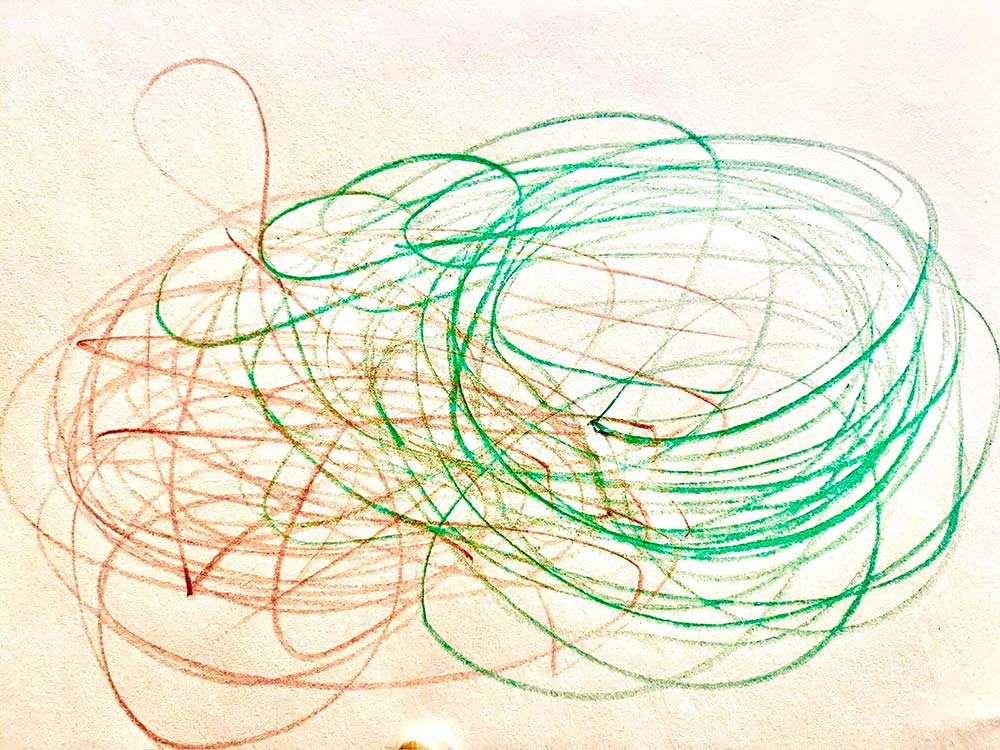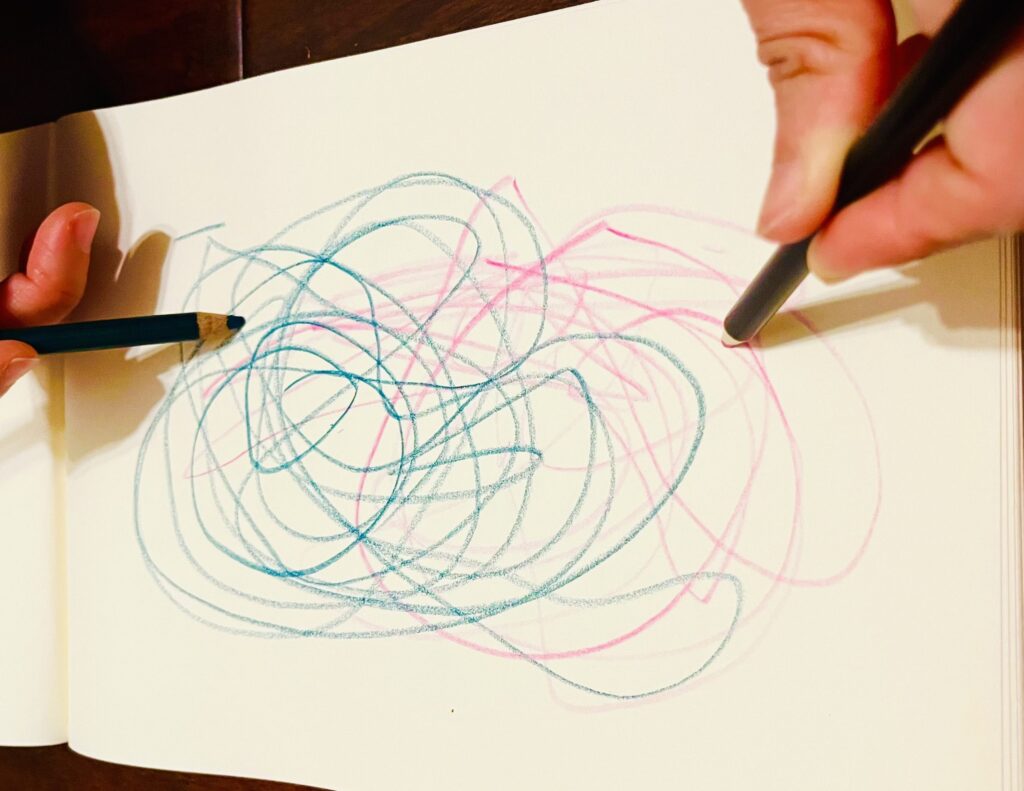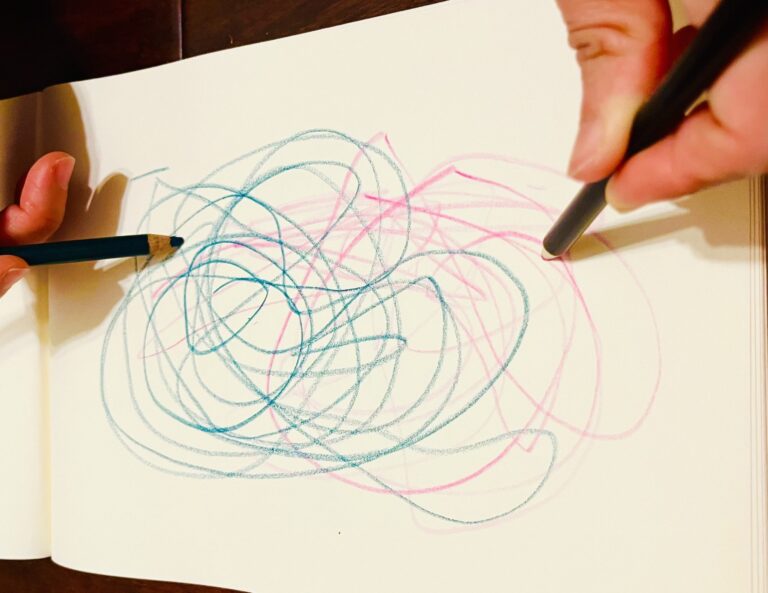Sometimes, talking isn’t enough.
Sometimes, even music feels too vulnerable.
And sometimes—especially when we’re overwhelmed, anxious, or shut down—what we need is a way to move through what we feel, without having to explain it.
That’s where bilateral drawing comes in.
It’s simple, accessible, and surprisingly powerful.
You don’t need any special art skills. Just a piece of paper… and both of your hands.
What Is Bilateral Drawing?
Bilateral drawing is the practice of making marks with both hands at the same time—one with your left, one with your right.
You can use crayons, markers, pastels—whatever feels good to you. You can start with drawing with your eyes closed. When you are ready to stop, open your eyes and take a moment to acknowledge the feelings that moved through your hands. Take another piece of paper and draw again with your eyes open.
The drawings are often mirrored, abstract, or free-form. There’s no pressure to make something pretty or “meaningful.” The power lies in the process.
Most importantly, you don’t need to talk while doing it. And what’s even better? Releasing the feelings stuck in your chest onto the paper enables you to understand your feelings better and communicate what is bothering you and why that is!
The movement itself is the therapy.
Why Does Bilateral Drawing Help the Nervous System?
Bilateral drawing engages both hemispheres of the brain, creating a kind of inner bridge between logic and emotion, body and mind, trauma and integration.
When you move both hands rhythmically across the page:
- You stimulate coordination between the left and right brain
- You increase access to implicit memories (the ones we feel, but can’t always name)
- You give the nervous system a task that’s grounding, soothing, and organizing
This is especially helpful if you’ve experienced trauma, are highly sensitive, or often get stuck in overthinking or emotional overwhelm. It’s also a core part of my process as a creative arts therapist in Austin, TX.

What Clients Often Say After a Bilateral Drawing Session:
- “I didn’t know I needed to release that.”
- “My mind finally quieted down.”
- “I feel more balanced, like both sides of me are talking again.”
For some, the movement feels meditative. For others, it becomes a safe way to express anger, grief, or fear that’s been held in the body.
There’s no one right way to do it. Sometimes you move fast and wild. Sometimes it’s slow and quiet. Your hands lead, your brain follows.
How to Try It at Home
- Get a large piece of paper and two drawing tools ( pick the colors and textures that match how you are feeling in the moment).
- Set a timer for 3–5 minutes.
- Begin drawing with both hands at the same time. No rules—just movement.
- Take a moment to notice any shifts: in breath, tension, mood, or sensation.
Optional: Play soft music in the background, or do it after a stressful moment to help re-regulate.
A Creative Way to Come Back to Yourself
Bilateral drawing is one of the tools I often use in sessions—especially when words feel stuck, when the body feels flooded, or when a part of you needs expression without judgment.
In a world that often asks us to push through, analyze, and explain… this practice invites you to slow down, feel, and listen from the inside out.
You don’t have to be an artist.
You just need a willingness to explore.
And if you’re longing for deeper support in reconnecting with your body, your emotions, and your creative self—I’d be honored to guide you.
Let’s begin where words end.






